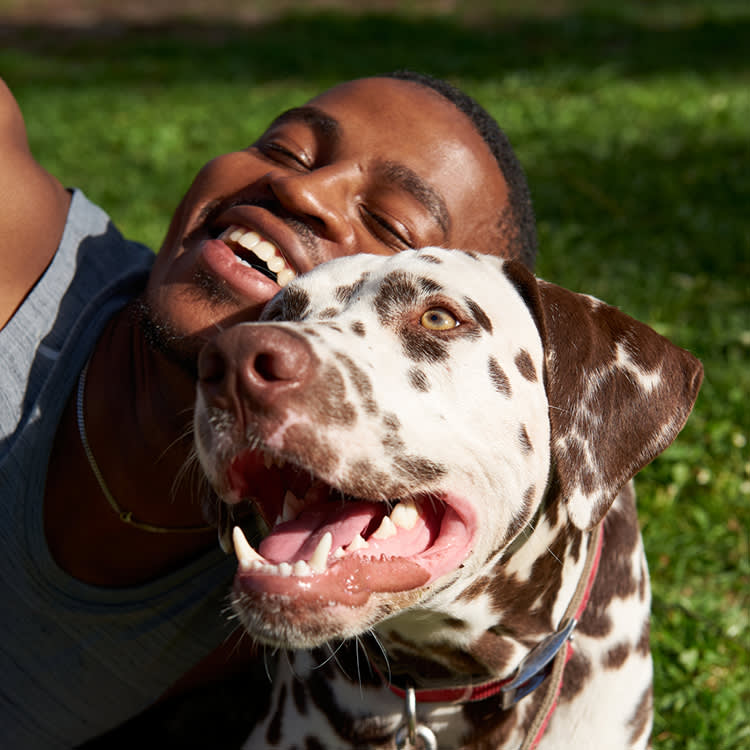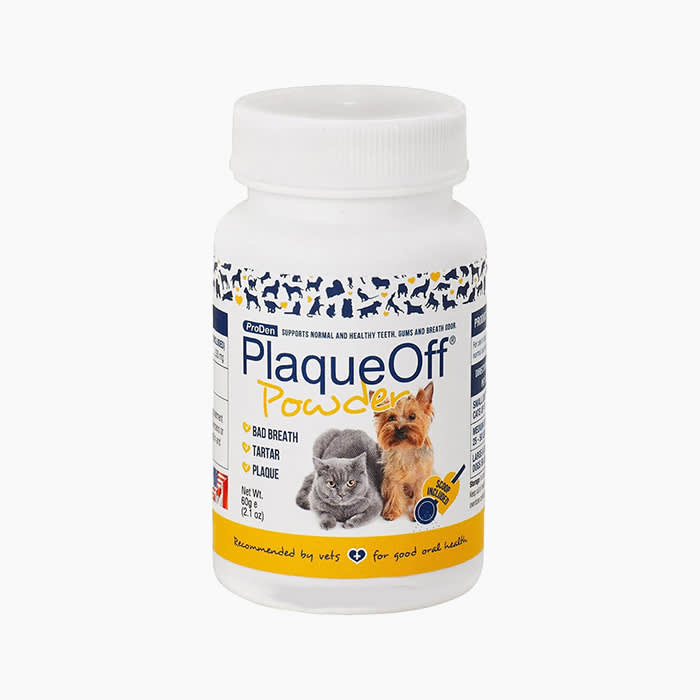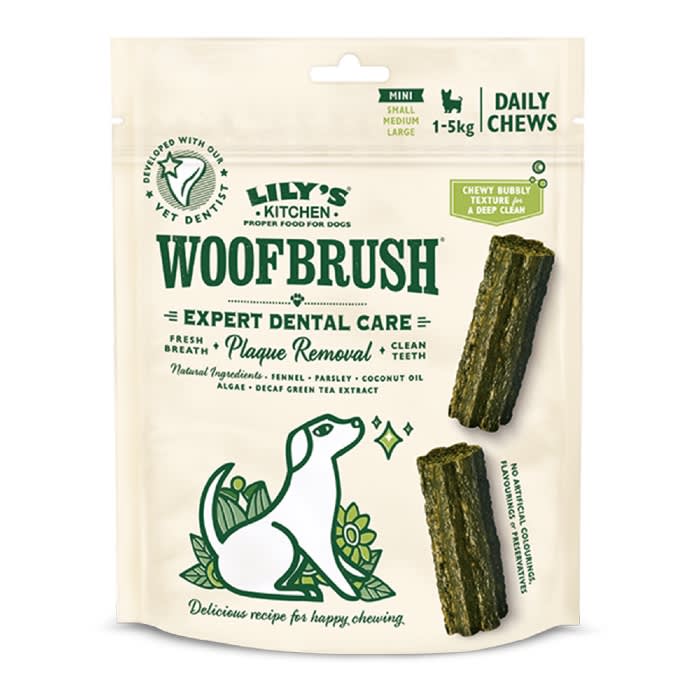8 Dental Products to Keep Your Dog’s Teeth Gleaming
The toothbrushes, dental wipes and breath fresheners that’ll keep your pup smiling

Share Article
There are about a million things more fun than brushing your dog’s teeth. No matter how many treats you offer, how much playtime you engage in or even if you cover the toothbrush with peanut butter (which we don’t recommend), little can be done to make a toothbrush more than a torture device in your dog’s eyes. Knowing all of this, you may be asking yourself, ‘Do I really need to brush my dog’s teeth?’
According to vet Dr Daniel T Carmichael, “The short answer is only the ones you want to save!” He adds that periodontal disease affects 85 percent of dogs, so those teeth definitely deserve some attention.
Although daily brushing is the best way to maintain your dog’s oral hygiene and stave off early onset dental disease, even the most stringent pro-brush advocates acknowledge that it’s no easy task. The best treatment is always prevention, so anything you can do to keep the bacterial plaque from accumulating on your dog’s teeth, the better.
How to brush your dog’s teeth
As far as tools go, you don’t need a special brush – any soft-bristled toothbrush is fine. A large breed, such as a Greyhound, might need something longer, and a small dog, such as a Pug, might benefit from a child’s brush.
Once you’ve chosen your player (or tooth-brushing tool), you’re ready to start brushing, but unfortunately, your pup probably isn’t. It’s best to start them as puppies or young dogs, but if you’ve adopted a senior dog or are just beginning the process, it’s important not to rush or push their boundaries.
“Get them used to the process. As you’re stroking them, lift up their lips and look at their teeth,” says Dr Carmichael, adding that it helps to go slowly and take breaks. It’s best to start by letting them lick the toothpaste off of your finger, then off of the toothbrush before you begin the process of brushing.
When you’re ready to take the final plunge into brushing your dog’s teeth, make sure the outside surfaces of the teeth are exposed and begin brushing them in circular motions. If you’ve adopted an older dog, they may have pre-existing dental issues, sensitivity or just won’t be comfortable with a brush in their mouth. In that case, go to your vet for an oral examination and potentially a professional dental treatment. That requires general anaesthesia, which could end up costing a fair bit, so it makes sense to start brushing early.
Oh, and once you’ve finished brushing, don’t forget to give the patient a treat – the dog equivalent of a lollipop. It’s important to reward them for their patience and make the experience a positive one so they’ll let you do it again (and hopefully, many times over). The gold standard is daily toothbrushing, so we’ve come up with the best dental products that should be in your pup’s medicine cabinet.
Best dog dental products
Best dog toothbrushes
Best dog toothpaste
Best dog dental wipes
Best dog dental food and water additives
Best dog dental chews

Avery Felman
Avery is a writer and producer. She has written for numerous publications, including Refinery29, BuzzFeed, and V Magazine. When she’s not at her computer, you can find her reading, practicing her Greek on Duolingo, and delving into the Sex and the City discourse. She lives in Brooklyn, New York with her husband and their cat, Chicken, who rules with an iron fist.
Related articles
![Close up of red headed woman holding a black dog's face showing his teeth]()
They’re Just Like Us: Dogs Get Gingivitis
Dogs can suffer from gum disease, too. Here’s how to prevent it
![Dog with martingale collar and girl with blonde hair]()
Why Your Dog Needs a Martingale Collar
It prevents escape, works as a training tool and is recommended by dog rescue workers
![Same sex couple with their dog lying on the bed laughing at his farts]()
Here’s Why Your Dog Farts So Much
Expert solutions for your pup’s flatulence
![woman and dog sit on pet-friendly wood flooring in a chevron pattern]()
Let’s Talk Eco-Friendly Flooring Options for Pets
Wise choices make your home healthier for you and your pet












